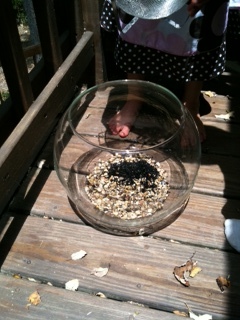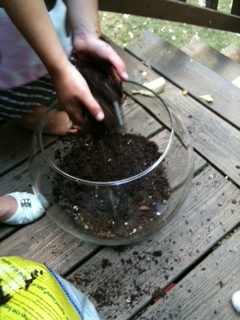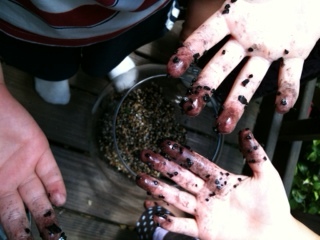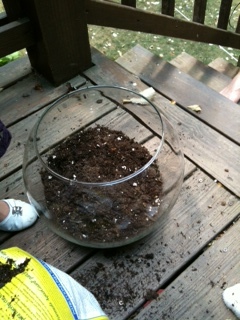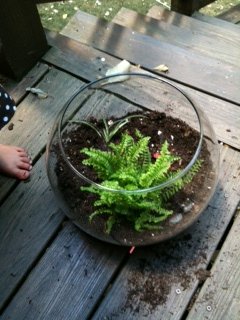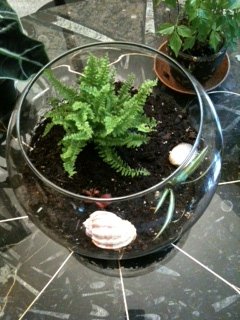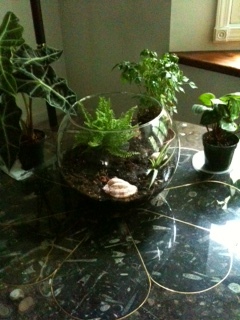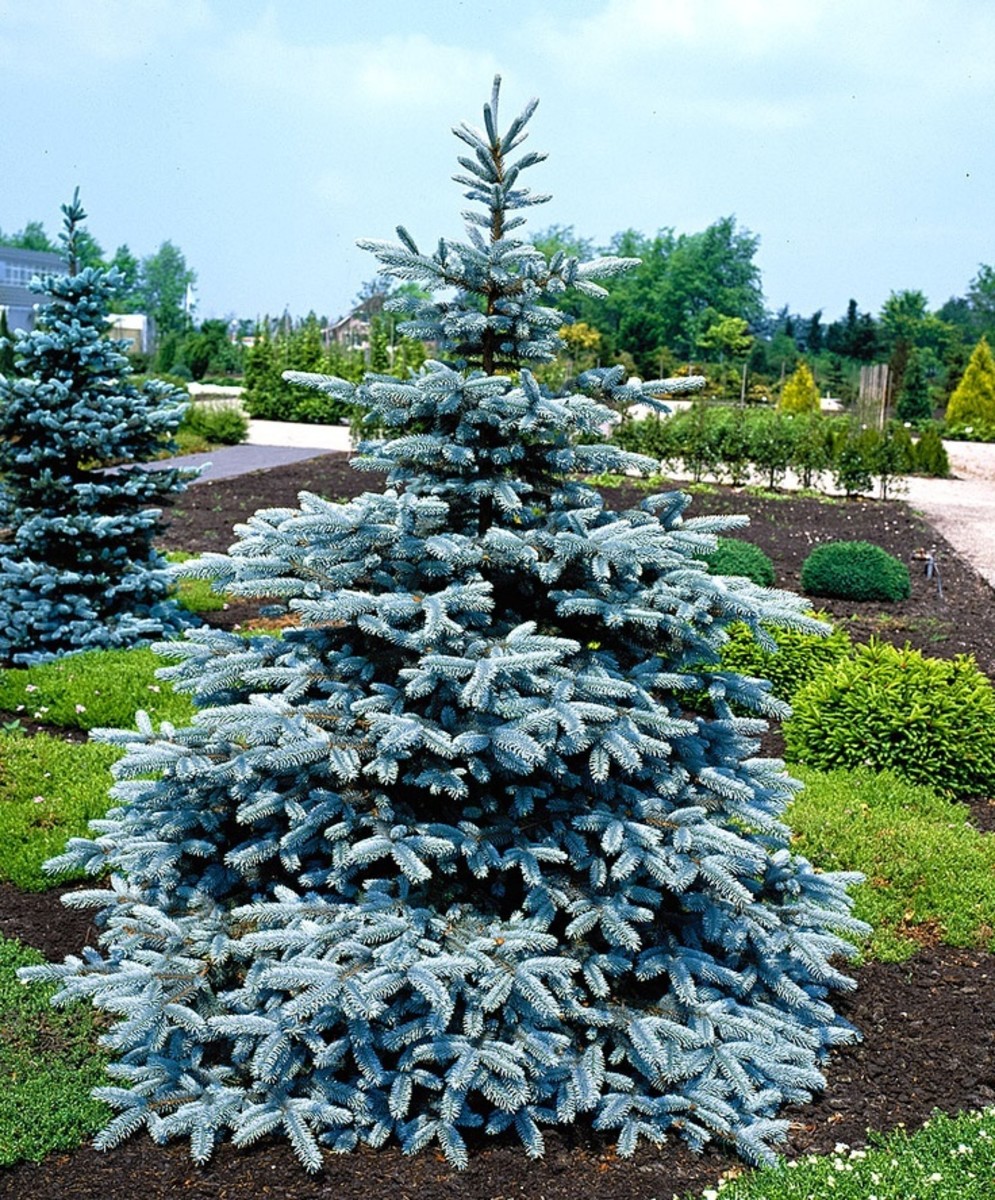Create a Peaceful Space with Miniature Gardens
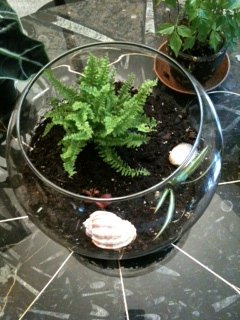
Copyright 2012 - Kris Heeter, Ph.D.
The therapeutic use of plants has been an ancient art that dates back for centuries.
The medicinal and therapeutic use of plants is often associated with their chemical properties. The use of teas, tinctures, and essential oils derived from plants has been common in Eastern medicine and has become a more common practice in an alternative medicines in the Western culture.
In recent decades research has confirmed what some Asian cultures have known for centuries: plants can be therapeutic on a much larger and different scale.
Plants and gardens have been recognized as being an important component in promoting emotional, mental, physical and intellectual well-being.
As a result, the field of “horticultural therapy” and the practice of creating relaxing garden spaces has become a common healing modality.
Creating a peaceful space can be done outdoors or indoors and can be an easy project for both kids and adults.
Something as small as a miniature indoor garden can have profound positive affects on day life and health.
Benefits of creating indoor plantscapes
There are a number of personal benefits to engaging in and creating one’s own indoor garden for both adults and children alike:
- It is an activity that brings enjoyment
- It can be a relaxing activity
- It allows for creative expression
- It creates stimulation for the senses
- It promotes a sense of accomplishment and productivity
- It can improve mood
In addition, it’s been show that those that actively engage in gardening activities, creating indoor or out plantscapes, are less likely to develop Alzheimer’s disease compared to those who have more passive interests (e.g. watching television).
Health benefits of plants
Indoor plants can provide a number of health benefits both in the home and the workplace.
- Plants improve indoor air quality by removing indoor pollutants (e.g., formaldehyde from new carpet, and benzene from inks and paint).
- Plants can increase worker productivity
- Plants produce a sense of tranquility
- Viewing natural settings and gardens can lower blood pressure and reduce muscle tension.
- The presence of plants and viewing gardens has been show to reduce the recovery time of patients in hospitals
Series of Step by Step "How-To" Photos
Click thumbnail to view full-size






Planting a small indoor and outdoor mini-gardens
Creating a miniature gardens can be very simple and provide aesthetic qualities and can turn a small space into relaxing environment. Small container gardens are easy put together.
The pictures below represent a step-by-step view of how to create a miniature terrarium. This was a fun activity that both adults and kids and engage in together.
Starting materials:
- A suitable container (here we used a fish bowl obtain through a thrift store)
- Small rocks
- Charcoal (available through any pet store in the aquarium aisle)
- Potting soil
- Small plants or cuttings from existing houseplants
- (Optional) Shells or large rocks for ornamental
Wash the container carefully with warm soapy water and rinse. Then follow these simple steps:
- Rinse small rocks and place a small layer in the bottom of the container.
- Rinse a handful or two of charcoal under cool water (this activates he charcoal - see extra note below) and layer it on top of the small rocks
- Place some good quality potting soil on top. In this case, we brought it up to fill the bottom third of the bowl.
- Choose two or three small plants or cutting and place in the soil – spacing them apart.
- (Optional) – add decorative shells or rocks. Here we added shells that our kids had collected from a beach in Chicago and a beach in the Philippines.
- Water gently with either filtered water or tap water that has sat in an open container overnight (tap water is often treated with chlorine and ideally that should be allowed to off-gas).
Water frequency will depend upon the type of plants chosen, the indoor temperature levels, and the indoor humidity levels. Given that those ten to change with the season, water frequency may need to change as well.
If plants get to big, they can either be cut back, divided or removed to a bigger container.
NOTE: The charcoal serves as a natural water purifier. It helps prevent bacteria and fungus from growing as water collects at the bottom of the terrarium. It's needed for those miniature gardens that thrive on moisture.
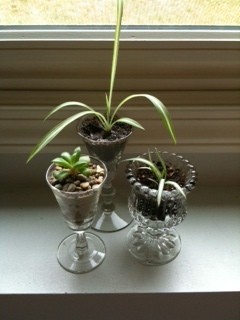
Good indoor plants for miniature terrariums
Tropical plants are great for indoor glass containers, fishbowls or old aquariums converted into terrariums.
Some plants to consider:
- Small ferns
- Small spider plant “babies”
- Coleus
- Ivy
- Dragon Tree Dracaena
- Moss
- Miniature Palms
- Carnivorous Plants (e.g., Butterwort, Pitcher Plant, Venus Fly Trap)
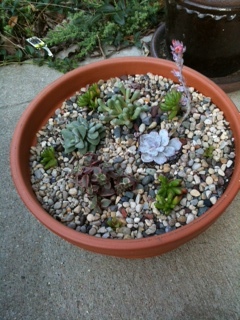
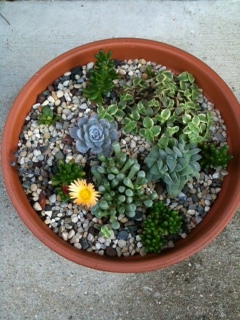
Gardening with indoor succulents
Succulents and semi-succulents are also suitable for creating indoor miniature gardens.
Succulents are ideal for those that don’t want to be bothered by frequent watering.
The growing medium or soil is courser and should provide good drainage. Pre-mixed cactus and succulent soil is usually available at most gardening centers. Succulents prefer dry soil, usually sunny windows and infrequent watering.
Some semi-succulents to consider are:
- Peperomia
- Kalanchoe
Some examples of succulents to consider:
- Crassula
- Sempervivum
- Aloe
- Jovibarba
- Haworthia
- Echeveria
The succulent garden shown on the right contains Crassula mesembryanthemoides, Crassula marginalis rubra "variegata", Echevera subsessilis, and "Baby Toes" among a few other succulents.
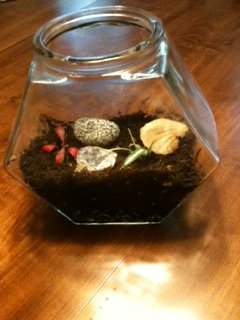
Have fun and enjoy the creative process
There is no right or wrong way to create your miniature garden. You can't make a mistake and if something does die, don't worry, it can easily be replaced.
There are endless possibilities. Don't be shy about trying different containers and grouping different plants together - think outside the box and have fun!
This can be a wonderful personal and meditative activity as well as a fun family activity.

